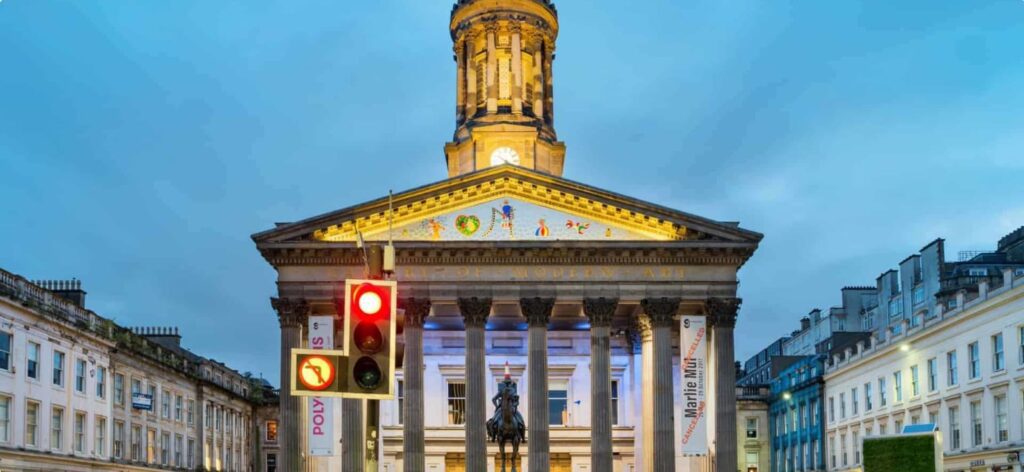St. George’s Place is located a short distance west of George Square and near the Glasgow city center. It is a busy square where a shopping center and a church may be found. But why did the government change the square’s name?
The city of Glasgow renamed the name of St. George’s place in 1986 to Nelson Mandela’s place in honor of Nelson Mandela, a high-profile political prisoner and soon to be president of South Africa.
Who Was Nelson Mandela?
Mandela’s birth name was Nelson Rolihlahla Mandela, also known as Madiba. He was born on July 18, 1918, in Mvezo, South Africa.
Mandela’s father, Chief Henry Mandela, was once the chief of the Madiba clan of the Xhosa-speaking Tembu people. Chief Henry died when Mandela was still young. Mandela had the claim to the chieftainship after his father died, but he renounced it and chose to become a lawyer.
Mandela came from an African royal family. His great grandfather was the king of the Thembu people, and eventually, their family almost lost their power to white colonization.
After the passing of Mandela’s father when he was twelve, he was raised by the regent of Tembu, Jongintaba Dalindyeb. Mandela was a nationalist and the first black president of South Africa, serving the nation from 1994 until 1999. He died on December 5, 2013, due to prolonged respiratory infection. (Source: Britannica)
What Were the Highlights of Nelson Mandela’s Political Career?
At 26 years old, Mandela decided to be part of the African National Congress and helped form the ANC Youth League. ANCYL was formed two years later after the Union was established. The Union was composed of educated black South Africans against apartheid through their diplomatic beliefs. During this time, they would send representatives to London to plead for the case.
Like other battles, their fight for their rights did not come to a favorable end resulting in ANCYL leaders deciding to take more militant actions through non-violent protests and breaking apartheid laws repeatedly. Their efforts weren’t enough to bring about change. (Source: Odyssey Traveller)
In the early nineties, Mandela started having negotiations with then South African president F.W. de Klerk for the system of discrimination of race which was peacefully and successfully brought to majority rule. Klerk and Mandela were awarded the Nobel Prize for Peace in 1993 for their joint efforts. (Source: Britannica)
Why Was Nelson Mandela Sent to Jail?
Mandela’s first time to be sent to prison happened in the mid-fifties during a mass police swoop. Over 150 million political leaders were arrested and charged with high treason, to which the trial went on for years.
On March 21, 1960, while Mandela was still in prison, about 69 unarmed protestors were killed by the police while fighting for their passed laws in Sharpeville. Mandela went underground after being acquitted of their high treason charge on March 29, 1961. (Source: Odyssey Traveller)
Mandela went back to prison in 1962, just a little over a year after being acquitted. This time, he was sentenced to 5 years for leaving the country illegally and incitement.
Mandela was kept in prison for longer than five years for his continuous battle against apartheid until 1982. During their Rivonia Trial in 1964, his speech from the dock was a classic defense of liberty and defiance of tyranny. This speech made its mark when he said I am prepared to die for a democratic South Africa. Mandela, along with other men who were convicted of sabotage, was soon sentenced to life imprisonment. (Source: Acom)
After a long fight for the rights and equality of the black South Africans, Mandela was released from prison on February 11, 1990, under the presidential term of President de Klerk. (Source: Britannica)
